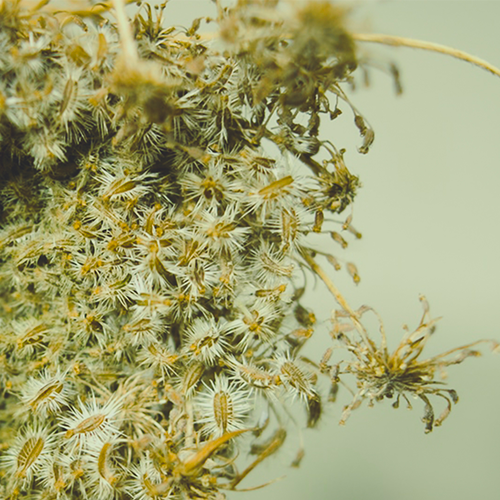 Image 1 of 2
Image 1 of 2

 Image 2 of 2
Image 2 of 2



Evernyl ®
Premium Synthetic Ingredient for Perfumery
Evernyl, also known as atraric acid or Veramoss, is a synthetic fragrance compound with a powerful mossy, woody, and phenolic aroma, reminiscent of natural oakmoss absolute. Developed by Roure Bertrand Dupont (now Givaudan), it functions as a key material in modern fougère and chypre accords. Evernyl offers a dry, powdery, earthy profile and is one of the essential molecules responsible for the olfactory character of natural Evernia prunastri.
Due to allergen restrictions on oakmoss extracts, Evernyl has become a cornerstone ingredient for safe, long-lasting moss impressions in contemporary perfumery.
Premium Synthetic Ingredient for Perfumery
Evernyl, also known as atraric acid or Veramoss, is a synthetic fragrance compound with a powerful mossy, woody, and phenolic aroma, reminiscent of natural oakmoss absolute. Developed by Roure Bertrand Dupont (now Givaudan), it functions as a key material in modern fougère and chypre accords. Evernyl offers a dry, powdery, earthy profile and is one of the essential molecules responsible for the olfactory character of natural Evernia prunastri.
Due to allergen restrictions on oakmoss extracts, Evernyl has become a cornerstone ingredient for safe, long-lasting moss impressions in contemporary perfumery.
Premium Synthetic Ingredient for Perfumery
Evernyl, also known as atraric acid or Veramoss, is a synthetic fragrance compound with a powerful mossy, woody, and phenolic aroma, reminiscent of natural oakmoss absolute. Developed by Roure Bertrand Dupont (now Givaudan), it functions as a key material in modern fougère and chypre accords. Evernyl offers a dry, powdery, earthy profile and is one of the essential molecules responsible for the olfactory character of natural Evernia prunastri.
Due to allergen restrictions on oakmoss extracts, Evernyl has become a cornerstone ingredient for safe, long-lasting moss impressions in contemporary perfumery.
Synthetic Ingredient Overview
🏭 Manufacturer: Givaudan
🔎 IUPAC Name: Methyl 2,4-dihydroxy-3,6-dimethylbenzoate
🧪 Synonyms: Evernyl, Veramoss, Atraric Acid
🧬 Chemical Formula: C₁₀H₁₂O₄
📂 CAS N°: 4707-47-5
📘 FEMA: Not listed
⚖️ Molecular Weight: 196.2 g/mol
📝 Odor Type: Mossy, Powdery
📈 Odor Strength: High — best evaluated in 10% dilution; extremely long-lasting (10+ days on blotter)
👃🏼 Odor Profile: Dry oakmoss, phenolic, earthy, woody, powdery; evokes the scent of aged paper, forest dust, and lichen
⚗️ Primary Uses: Fougère bases, chypre accords, woody-powdery perfumes, masculine fragrances
🧴 Appearance: White to off-white crystalline powder
What is Evernyl?
Evernyl is a synthetic benzoate ester with a natural origin in trace quantities from Evernia prunastri (oakmoss) and Prunus africanum. It was isolated and structurally elucidated as a moss-character-defining component, and later synthesized for perfumery purposes.
Its structure — a dimethylated, dihydroxy benzoate — gives it a rigid, phenolic-dry aroma profile that evokes forest floor, lichen, sun-dried bark, and oakmoss residue. Used in extreme dilution, it is a strategic ingredient to build the core of classical fougère and chypre perfumes, or to add dryness and powder to woody-aldehydic compositions.
Olfactory Profile and Perfumery Applications
Olfactive evolution:
Top: Dry, woody-dusty, slightly spicy
Heart: Oakmoss absolute mimicry — earthy, phenolic, paper-dry
Drydown: Soft powdery wood, forest detritus, aged leather
Evernyl is primarily used:
In chypres and fougères, where it replaces oakmoss in whole or part
To create powdery, dry structures that support violet, orris, or aldehydes
In masculine perfumery, particularly in woody-aromatic and leather families
As a long-lasting fixative note, adding persistence to base accords
Although not a full replacement for oakmoss absolute, it allows regulatory-safe replication of oakmoss effects when paired with other materials such as vetiveryl acetate, patchouli, or natural oakmoss in trace amounts.
Flavor Profile (Trace Applications Only)
Taste: Mossy, dry, earthy, woody, phenolic, spicy
Use: Not permitted in standard flavor applications (aromatic use only)
Additional Notes and Scientific Research
Historical Use and Development:
Evernyl was first characterized and used by Roure Bertrand Dupont as a way to maintain the oakmoss signature in fragrance while improving safety and consistency. It became prominent after IFRA and EU restrictions limited the use of natural oakmoss due to its allergenic atranol and chloroatranol content.
Formulation Insight:
Evernyl combines well with coumarin, Iso E Super, vetiveryl acetate, lavender derivatives, and aldehydes, helping to create retro-modern fougère profiles. Its super-dry, non-lactonic nature allows it to contrast sweet notes without weighing them down.
Biomedical Research:
Atraric Acid has been studied for its antiandrogenic activity, especially in relation to prostate cancer therapies and androgen receptor inhibition. Though these applications are outside perfumery, they demonstrate the molecule’s diverse pharmacological profile (NCBI, 2020).
Regulatory and Safety Overview
IFRA Status: Not currently restricted — approved as a safer oakmoss substitute
EU Allergens: Does not contain atranol or chloroatranol; no labeling required
Toxicology: Low dermal sensitization; non-phototoxic
Storage: Stable under typical perfumery conditions; store in airtight containers away from humidity
✅ Recognized as a safe, reliable replacement for oakmoss in most regulatory environments.
Sources
Givaudan Ingredient Archive – Atraric Acid (Evernyl)
NCBI PubChem – CID 78435: Methyl 2,4-dihydroxy-3,6-dimethylbenzoate
Scentspiracy Research Notes – Oakmoss Substitutes (2022)
Arctander, S. (1960). Perfume and Flavor Materials of Natural Origin
Scientific Committee on Consumer Safety (SCCS) – Oakmoss Allergen Assessments




